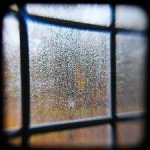False Positive
and False Negative: Part III
So now you
know what they are. And we've looked at how to
apply these two to the matter of reality (when we try to
see reality, we can see things correctly, or incorrectly).
What we see can be true, or false (we're still leaving out the idea of
intentional falsehood, or lying--what the boy who cried wolf
did).
Rain,
rain, go away...

 Now, this is
where it can get a little complicated, so consider the
following: We look out the window to see if it's raining, and we
either see that it is, or that it isn't.
Now, this is
where it can get a little complicated, so consider the
following: We look out the window to see if it's raining, and we
either see that it is, or that it isn't.
So...is it
really raining? Is it really not raining. Our answer
can be either yes (a positive), or no (a negative). Now if
we correctly see reality, the yes, or the no may be true.
But maybe we don't see reality correctly (maybe there's a
sprinkler outside making it look like it's raining, when it's
not).
So here's
what this all looks like
|
Is it raining? |
Yes (Positive) |
No (Negative) |
|
True |
True Positive
It really is
raining |
True Negative
It really isn't
raining |
|
False |
False Positive
It really isn't
raining |
False Negative
It really is
raining |
Harold and Robert Revisited
Here's the
same chart applied to our story about Robert and Harold.
If we test someone for cancer, and the results reveal they have
cancer, that can be true (the person really dose have
cancer), or false (the person really doesn't have cancer).
And if the results show no cancer, that, too, can be true (there
really is no cancer) or false (there really is cancer.
Here's a visual picture of what we're talking about:
|
Does the
person have cancer? |
Yes (Positive) |
No (negative) |
|
True |
True Positive
The person does
have cancer |
True Negative
The person does
not have cancer |
|
False |
False Positive
The person does
not have cancer |
False Negative
The person
does have cancer |
Seeing may
be believing, but sometimes, in spite of our best efforts, we
can be wrong. The fact is,
we can think, or believe we see reality correctly, when we don't.
Why? It can result from many different things. So we try to prevent
it from happening. In Science (with
a capital "S"), we have a method that we've developed to help
prevent seeing things wrong. This method attempts to
provide valid results. It includes things like making sure
data is clearly visible and can be replicated.
So we have to deal with that, too. BUT,
and this is a big but, when we try to reduce the possibility of
one kind of false conclusion, we increase the possibility of the
other. Why? Because how we do this is by how high,
or low we set the bar for deciding our conclusion (deciding
whether our observations, test results, etc. are true, or
false).
In each case,
we have to decide which of these two errors we can best
tolerate, the false positive, or the false negative, knowing
that when we increase to possibility of the one we prefer, we
reduce the possibility of the other. If, in the case of
convicting someone of murder, we don't want to put an innocent
person to death, we increase the possibility of setting a
murderer free. That's just how it is.
 To
read about intelligence
To
read about intelligence
 To
read about reasoning and how we can use it
To
read about reasoning and how we can use it
 To
read about Critical Thinking and how it benefits us
To
read about Critical Thinking and how it benefits us
 To
read about a couple ways of thinking (divergent and convergent)
To
read about a couple ways of thinking (divergent and convergent)
 To
read about causality
To
read about causality
 To
read about who likes it when people are ignorant, or stupid
To
read about who likes it when people are ignorant, or stupid
 To
go to the Articles Page.
To
go to the Articles Page.